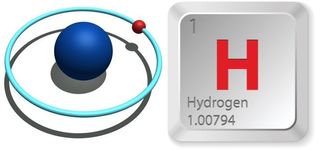Engineering
consulting firm KBR, Inc. (KBR: NYSE) has reportedly
been tapped by Singapore’s National Climate Change Strategy Group to complete a
feasibility study on hydrogen production and applications. Apparently, the Singapore strategy group
wants to find out if hydrogen can play a part in long-term, cost-competitive
emissions reduction in Singapore. A
major move by a sizable decision maker like Singapore could present a turning
point for hydrogen as part of the renewable energy complex.
In recent months
there has been quite a bit of news about hydrogen in the press. Earlier this month engine maker Cummins, Inc. (CMI:
NYSE) hoovered up the shares of hydrogen technology
developer Hydrogenics
Corp. (previously HYGS: Nasdaq)
for $15.00 per share. The deal valued
the Hydrogenics’ business of fuel cell and hydrogen generation equipment
product lines at $290 million. Hydrogenic’s fuel cell power systems will be a
perfect fit for Cummins power systems product line. France’s L’Air Liquide, S.A. (AI:
PA) is retaining its equity stake in Hydrogenics,
making the industrial gas supplier Cummin’s new best friend in the hydrogen
supply chain.
We even noted
recent accomplishments in hydrogen powered trains in the U.K. and Germany in
the post ‘Hydrogen on the Rails’ on June 21st
highlighted a private equity investment in hydrogen in the post ‘Super-size with Hydrogen’ on
August 20th.
Despite all the
hype, Singapore strategists apparently think it is well advised to keep a
realistic view on the economics of hydrogen as an energy source. Cummins and others are anxious to incorporate
hydrogen in their product lines to reduce greenhouse gas emissions. When burned hydrogen produces no carbon
dioxide. Substitution of hydrogen for
diesel or gas in vehicles or trains is appealing. 
Unfortunately,
the most common hydrogen production method involves fossil fuel. Either natural gas or methane is put through
a steam reforming process wherein the gas is super heated in the presence of
steam mixed with catalyst such as nickel. About 95% of all hydrogen is produced
with this method, leaving hydrogen with a fairly good sized carbon footprint
despite its clean burning reputation.
The balance of
commercial hydrogen is produced using electrolysis. It is an energy hungry process wherein
electricity is used to split water into hydrogen and oxygen. The conversion of electricity to hydrogen
involves a considerable give-up in heat energy of about 40% precludes using
hydrogen made from this method for any heating application. Given the dire climate situation hydrogen
from electrolysis might still be viable as a clean transport fuel.
Of course, this analysis
is based on the current state of hydrogen technology. Intelligent investments made by astute
investors like Cummins and L’Air Liquide could be the critical steps needed to
improve the economics of hydrogen. Solid
analysis is needed to guide investors. Some
answers may result from the study commissioned by Singapore.
KBR, which
specializes in the hydrocarbon processing supply chain, will get help from the
energy and commodity price consulting group, Argus Media. Investors will probably not know the outcome
of KBR’s analysis unless Singapore makes an investment in hydrogen technology
or production capacity. It is
instructive in itself that major decisions are pending against this energy
source that has been bandied about as both hype and hope.
Neither the author of the Small Cap Strategist web log,
Crystal Equity Research nor its affiliates have a beneficial interest in the
companies mentioned herein.
1 comment:
Great article, I hope that you will going to post another one.
hydrogen water maker
Post a Comment